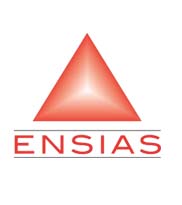- Accueil
-
L'Ecole
-
FORMATIONS
-
FORMATION INGENIEUR
-
Nouvelles filières offertes
- Ingénierie Intélligence Artificielle (2IA)
- Smart Supply Chain & Logistics (2SCL)
- Business Intelligence & Analytics (BI&A)
- Génie de la Data (GD)
- Génie Logiciel (GL)
- Ingénierie Digitale pour la Finance (IDF)
- Smart System Engineering (SSE)
- Data and Software Sciences (D2S)
- Cybersécurité, Cloud et Informatique Mobile (CSCC)
- REGLEMENT DES ETUDES DE L’ENSIAS CYCLE INGENIEUR
-
Nouvelles filières offertes
-
FORMATION INGENIEUR
- FORMATION CONTINUE
-
Recherche
- INTERNATIONAL
- ENTREPRISES
- VIE ESTUDIANTINE
- BIBLIOTHEQUE
LES DERNIÈRES INFORMATIONS
Evaluating a Comparing Deep Learning Architectures for Blood Glucose Prediction
| Titre | Evaluating a Comparing Deep Learning Architectures for Blood Glucose Prediction |
| Publication Type | Journal Article |
| Year of Publication | 2021 |
| Authors | T. Idrissi, E, Idri, A |
| Journal | Communications in Computer and Information Science |
| Volume | 1400 CCIS |
| Pagination | 347-365 |
| Mots-clés | Biomedical engineering, Blood, Blood glucose level, Comparative studies, Continuous glucosemonitoring (CGM), Convolutional neural networks, Deep learning, Diabetic patient, Disease control, Forecasting, Glucose, Learning architectures, Learning techniques, Long short-term memory, Mean square error, Parameters selection, Root mean square errors |
| Abstract | To manage their disease, diabetic patients need to control the blood glucose level (BGL) by monitoring it and predicting its future values. This allows to avoid high or low BGL by taking recommended actions in advance. In this paper, we conduct a comparative study of two emerging deep learning techniques: Long-Short-Term Memory (LSTM) and Convolutional Neural Networks (CNN) for one-step and multi-steps-ahead forecasting of the BGL based on Continuous Glucose Monitoring (CGM) data. The objectives are twofold: 1) Determining the best strategies of multi-steps-ahead forecasting (MSF) to fit the CNN and LSTM models respectively, and 2) Comparing the performances of the CNN and LSTM models for one-step and multi-steps prediction. Toward these objectives, we firstly conducted series of experiments of a CNN model through parameters selection to determine its best configuration. The LSTM model we used in the present study was developed and evaluated in an earlier work. Thereafter, five MSF strategies were developed and evaluated for the CNN and LSTM models using the Root-Mean-Square Error (RMSE) with an horizon of 30 min. To statistically assess the differences between the performances of CNN and LSTM models, we used the Wilcoxon statistical test. The results showed that: 1) no MSF strategy outperformed the others for both CNN and LSTM models, and 2) the proposed CNN model significantly outperformed the LSTM model for both one-step and multi-steps prediction. © 2021, Springer Nature Switzerland AG. |
| URL | https://www.scopus.com/inward/record.uri?eid=2-s2.0-85107268637&doi=10.1007%2f978-3-030-72379-8_17&partnerID=40&md5=2b36d3e75ce8d317c8b80f3272f4d956 |
| DOI | 10.1007/978-3-030-72379-8_17 |
Revues:
LIENS UTILES
Localisation
Contactez-nous
ENSIAS
 Avenue Mohammed Ben Abdallah Regragui, Madinat Al Irfane, BP 713, Agdal Rabat, Maroc
Avenue Mohammed Ben Abdallah Regragui, Madinat Al Irfane, BP 713, Agdal Rabat, Maroc
![]() Télécopie : (+212) 5 37 68 60 78
Télécopie : (+212) 5 37 68 60 78
![]() Secrétariat de direction : 06 61 48 10 97
Secrétariat de direction : 06 61 48 10 97
Secrétariat général : 06 61 34 09 27
Service des affaires financières : 06 61 44 76 79
Service des affaires estudiantines : 06 62 77 10 17 / n.mhirich@um5s.net.ma
Résidences : 06 61 82 89 77
- Compteur de visiteurs:628,637
Education - This is a contributing Drupal Theme
Design by WeebPal.
Design by WeebPal.



































